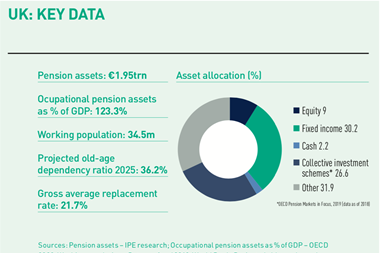Hannoversche Kassen, a German occupational pensions provider for the non-profit sector, is calling for investment restrictions to be reviewed to expand investors’ portfolios with additional, and more specific, asset classes such as green infrastructure, Silke Stremlau, a member of the managing board, told IPE.
The catalogue of investments, which is part of the Investment Ordinance Anlageverordnung, sets a detailed framework for the mix and diversification of investments of guaranteed assets of company pension schemes, in particular Pensionskassen, Sterbekassen and small insurance companies.
“The investment catalogue should include additional asset classes, for example green infrastructure, and define higher thresholds for those types of investments [in green infrastructure], for example to up to 5%,” Stremlau said.
The threshold for investing in additional asset classes should reflect their degree of risk “even more strongly,” she added.
Pensionskassen can invest a maximum 1% of security assets in a renewable energy fund classified as a special alternative investment fund (AIF), she said.
“Certainly understandable for security reasons, but a range of 1-5% would definitely be more helpful,” she noted.
Italian government bonds, on the other hand, can make up 30% of total security assets. “From our point of view, this is much more risky than 1.5% in a special AIF,” she said.
The catalogue does not include new forms of investment particularly relevant in the context of financing the transition to a green economy, including allocations in infrastructure, as standalone asset classes, but “as mixed share based on the investment vehicle chosen, and regardless of their character or degree of risk,” Stremlau explained.
“The risk of loss is lower, especially when political programmes such as the Green New Deal support infrastructures projects,” she said.
With a review of the investment ordinance, Stremlau continued, a higher number of Pensionskassen could invest in segments that lead to a transition to a sustainable economy, supporting public spending.
Hannoversche Kassen considers the limit of up to 5% of the guaranteed assets for registered bonds (NSV) and promissory note loans (SSD) of non-listed companies “too strict”.
“A range of 7.5-10% would make more sense,” she said, noting that the restriction has liquidity reasons, because registered bonds of non-listed companies would not be easy to sell if necessary.
On the other hand, however, it may limit future participation of investors in a firm’s new environmental, social, and corporate governance (ESG) bond issuances if the share of allocation is exhausted.
In the case of bearer bonds issued by listed companies, Hannoversche is “surprised” that the quota reaches a “generous” 50% of the guaranteed assets in total and 5% per issuer.












No comments yet